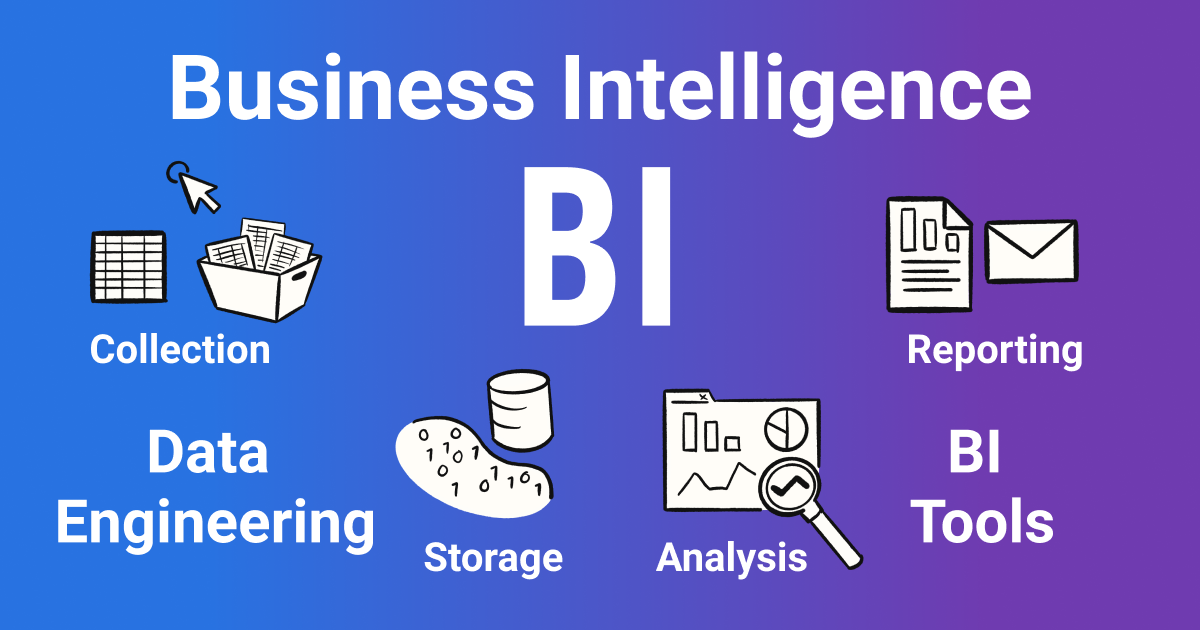
Learn How Business Intelligence Software Streamlines Data Reporting
In today’s fast-paced business environment, organizations are constantly seeking ways to improve their decision-making processes, increase efficiency, and gain a competitive edge. One key factor in achieving these goals is the effective use of data. With the vast amounts of data being generated every day, businesses need a way to collect, analyze, and interpret this data to inform their strategies and drive growth. This is where Business Intelligence (BI) software comes in – a powerful tool designed to streamline data reporting and unlock the full potential of an organization’s data.
What is Business Intelligence Software?
Business Intelligence software is a type of application that enables organizations to collect, analyze, and visualize data from various sources, providing insights that can inform business decisions. BI software combines data from different departments, such as sales, marketing, and finance, to create a unified view of an organization’s performance. This software can be used to analyze customer behavior, track sales trends, monitor financial performance, and identify areas for improvement.
How Does Business Intelligence Software Streamline Data Reporting?
Business Intelligence software streamlines data reporting in several ways:
- Data Integration: BI software integrates data from various sources, such as databases, spreadsheets, and external data providers, into a single platform. This eliminates the need for manual data consolidation and reduces the risk of errors.
- Automated Reporting: BI software automates the reporting process, enabling organizations to generate reports quickly and easily. This saves time and resources, allowing employees to focus on higher-value tasks.
- Real-Time Data Analysis: BI software provides real-time data analysis, enabling organizations to respond quickly to changes in the market or their business. This helps businesses to stay ahead of the competition and make informed decisions.
- Data Visualization: BI software provides data visualization tools, such as dashboards, charts, and graphs, to help organizations understand complex data insights. This makes it easier for non-technical users to understand and interpret data.
- Self-Service Analytics: BI software provides self-service analytics capabilities, enabling employees to create their own reports and analyze data without requiring IT support.
Benefits of Business Intelligence Software
The benefits of using Business Intelligence software are numerous:
- Improved Decision-Making: BI software provides organizations with accurate and timely data, enabling them to make informed decisions.
- Increased Efficiency: BI software automates the reporting process, reducing the time and resources required to generate reports.
- Enhanced Collaboration: BI software enables employees to share data and insights, facilitating collaboration and improving communication across departments.
- Increased Revenue: BI software helps organizations to identify new business opportunities and improve their sales and marketing strategies.
- Competitive Advantage: BI software provides organizations with a competitive edge, enabling them to respond quickly to changes in the market and stay ahead of the competition.
Types of Business Intelligence Software
There are several types of Business Intelligence software available, including:
- Cloud-Based BI: Cloud-based BI software is hosted in the cloud, providing organizations with scalability, flexibility, and cost savings.
- On-Premise BI: On-premise BI software is installed on an organization’s servers, providing greater control and security.
- Open-Source BI: Open-source BI software is free to use and customize, providing organizations with a cost-effective solution.
- SaaS BI: SaaS BI software is a subscription-based service, providing organizations with a low-cost, scalable solution.
How to Choose the Right Business Intelligence Software
Choosing the right Business Intelligence software can be a challenging task, but here are some factors to consider:
- Data Sources: Consider the types of data sources you need to integrate, such as databases, spreadsheets, and external data providers.
- Reporting Requirements: Consider the types of reports you need to generate, such as sales reports, customer reports, and financial reports.
- User Requirements: Consider the number of users who will need access to the BI software, as well as their skill levels and technical expertise.
- Scalability: Consider the scalability of the BI software, ensuring it can handle large volumes of data and growing user bases.
- Cost: Consider the cost of the BI software, including any subscription fees, licensing fees, and implementation costs.
Implementation and Maintenance of Business Intelligence Software
Implementing and maintaining Business Intelligence software requires careful planning and execution. Here are some best practices to follow:
- Define Requirements: Define your reporting requirements and data sources before selecting a BI software.
- Choose the Right Vendor: Choose a reputable vendor with experience in implementing BI software.
- Develop a Implementation Plan: Develop a detailed implementation plan, including timelines, milestones, and resource allocation.
- Train Users: Train users on the use of the BI software, providing them with the skills and knowledge they need to generate reports and analyze data.
- Monitor and Evaluate: Monitor and evaluate the performance of the BI software, ensuring it meets your reporting requirements and provides a strong return on investment.
Conclusion
In conclusion, Business Intelligence software is a powerful tool that streamlines data reporting, providing organizations with accurate and timely data insights. By automating the reporting process, integrating data from various sources, and providing real-time data analysis, BI software enables organizations to make informed decisions, increase efficiency, and gain a competitive edge. With the right BI software, organizations can unlock the full potential of their data, drive growth, and achieve their business objectives. Whether you’re a small business or a large enterprise, Business Intelligence software is an essential tool for anyone looking to improve their decision-making processes and stay ahead of the competition.
Closure
Thus, we hope this article has provided valuable insights into Learn How Business Intelligence Software Streamlines Data Reporting. We hope you find this article informative and beneficial. See you in our next article!


